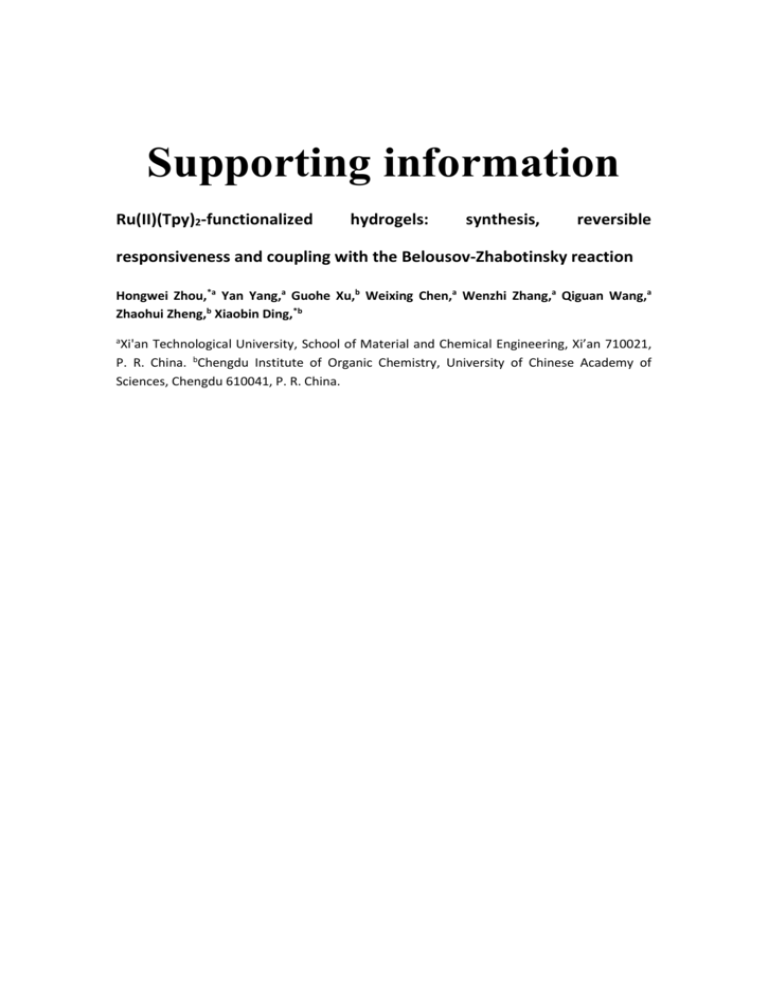pola27690-sup-0001-suppinfo
advertisement

Supporting information Ru(II)(Tpy)2-functionalized hydrogels: synthesis, reversible responsiveness and coupling with the Belousov-Zhabotinsky reaction Hongwei Zhou,*a Yan Yang,a Guohe Xu,b Weixing Chen,a Wenzhi Zhang,a Qiguan Wang,a Zhaohui Zheng,b Xiaobin Ding,*b a Xi'an Technological University, School of Material and Chemical Engineering, Xi’an 710021, P. R. China. bChengdu Institute of Organic Chemistry, University of Chinese Academy of Sciences, Chengdu 610041, P. R. China. FIGURE S1 (a) The optical images of the terpyridine-containing hydrogels after immersing into Fe2+ solution for different period of time. (b) The corresponding length change of the terpyridine-containing hydrogels over time and the optical images of terpyridine-containing hydrogel with characters “poly” written with Fe2+ solution (inset). the Reduced state Oxidized state Reduced state Gelt1 Gelt5 Gelt10 FIGURE S2 Redox responsive behaviours of the hydrogels. The three columns from left to right represent the original states, the oxidized states, and the re-reduced states, respectively. This is related to FIGURE 4. Reduced state Oxidized state Reduced state Gelnt1 Gelnt5 Gelnt10 FIGURE S3 Redox responsive behaviours of the hydrogels. The three columns from left to right represent the original states, the oxidized states, and the re-reduced states, respectively. This is related to FIGURE 4. FIGURE S4 Optical images of Gelnt5 after immersing into NaBrO3 solution for different period of time from 0 min (first image) to 11 min (last image). This is related to FIGURE 5. FIGURE S5 Optical images of oxidized Gelnt5 after immersing into Na2SO3 solution for different period of time from 1 min (first image) to 9 min (last image). This is related to FIGURE 5.











